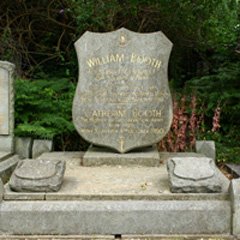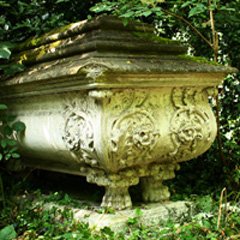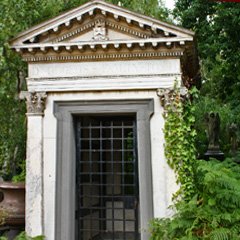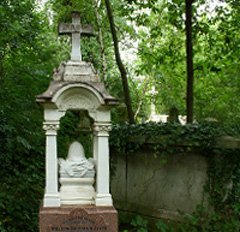Recent monument restoration projects
As part of Abney Park Trust’s charitable objectives to conserve and restore Abney Park Cemetery as an area of architectural and ecological significance, we have embarked on a programme of monument restoration.
Read the stories below to find out what we have been recently working on.
Abney Park Trust is pleased to announce that the works to restore the lid of the slate sarcophagus for William Williams, near the Church St entrance, have now been completed by Orbis Conservation.
Abney Park Trust are extremely pleased to announce the completion of the professional clean of the majestic grey granite Irish Celtic Cross of brothers Andrew Holmes Reed and Talbot Baines Reed that stands near the Church Street entrance at Abney House Corner.
Abney Park Trust has cleaned the Grade II listed memorial and had it restored to its former glory thanks to a four-figure donation from TimeLine, a learning project charity.
Read about the restoration of the War Memorial to its pristine condition after it was damaged by successive chalkings.
Restoration work in Abney Park Cemetery is finally complete on the well-loved monument to Issac Watts, one of Stoke Newington’s most notable former residents.
Please continue to support our monument restoration programme
Abney Park’s Listed Monuments
Founder and First General of the Salvation Army from 1878-1912, and his wife Catherine, founder and 'Mother of the Salvation Army'. A large Salvation Army shield of blue Pennant sandstone with gilt inscriptions.
Menagerist, mainly responsible for bringing Asian and African animals to the attention of the Victorian public. A life-size sleeping lion on a high rectangular pedestal. Solid white marble.
Superintendent of the London Fire Engine Establishment from 1832 until 1861. His life was claimed by a falling wall in the fire that raged for a fortnight at Cotton's Wharf, Tooley St. A pedestal monument of white stone.
Daughter of James Forsyth, one of the most eminent architectural sculptors of his day, who designed and sculpted this monument. In High Victorian Gothic style, white sculpted panels on a red sandstone base. The front is a delicate medallion portrait of Agnes. The rear a figure group representing Christ blessing children.
Abney Park Chapel is the first building known to have been built by John Jay. His varied body of works included building the Victorian clock tower and the city clock of the Houses of Parliament during the 1850s. A rich baroque sarcophagus of white stone with a curved belly, standing on four delightful lion's paws with elaborately carved filigree at each end. Rumoured to have been sculpted by Jay himself.
Second son of Sir Charles Reed MP, one of the first directors and trustees of Abney who is also buried in the cemetery. Andrew Holmes worked at the family type foundry along with his brother Talbot Baines Reed, also commemorated by this memorial. Talbot Baines became an expert in type, but was better known as an author of stories for boys, many of which were published in The Boy's Own Paper - it's said Jeeves author PG Wodehouse was a fan. Monumental High Celtic cross with detailed bold relief patterning and inscriptions on the base of Celtic lettering. Made in Kilkenny from grey Irish granite.
A Congregational minister and Welsh MP, an advocate of peace and international arbitration and secretary of the Peace Society from 1848-1884. A respected Abolitionist, author & journalist. A white stone and marble tomb in early English gothic style, with its own gabled roof and Richards' carved portrait is on the front panel. This was erected by public subscription in 1891.
A doctor of medicine and donor of stained glass memorial windows in St Paul's Cathedral, Westminster Abbey and City Temple. The only mausoleum in Abney Park, it stands in the position once occupied by the front door to Abney House. A single cell temple of white marble, with a pedimented stone roof. Detailed carvings on the gables.
Of Highbury New Park, a prominent Congregationalist. Monument designed by Alfred Waterhouse, architect of the prestigious Manchester Assize Courts.
A High Victorian Gothic structure in two diminishing stages with a scalloped pyramidal cap and amoral bearings in relief on the lower panel. Carved white limestone.
The first police officer shot and killed on duty. He was murdered in the pursuit of two anarchists who had attempted the armed robbery of a wages clerk. A sculpted police helmet and cape of white marble under a stone baroque style baldaquin with four columns.
The only surviving child of the former slave, anti-slavery campaigner and author Olaudah Equiano (also known as Gustavus Vassa, the African). After living in Devon, then Clavering, she moved back to Hackney where she died of uterine disease. Her memorial was re-pinned and re-erected in 2006, after being re-discovered in Abney Park. A white stone pedestal surmounted by a draped and wreathed urn.
Samuel Robinson 1751 - 1833
An architect and surveyor, and founder of the Retreat Almshouses for the widows of dissenting ministers in Hackney. A white stone chest built in late gothic style, with detailed tracery patterning designed by Robinson.
John Swan 1787 - 1869
An engineer and inventor. The originator of the steamship's screw propellor (1824) and the self acting chain messenger (1831). He never patented his inventions, but allowed his superiors to publish them under their names. A draped and wreathed urn standing on a white stone pedestal.
